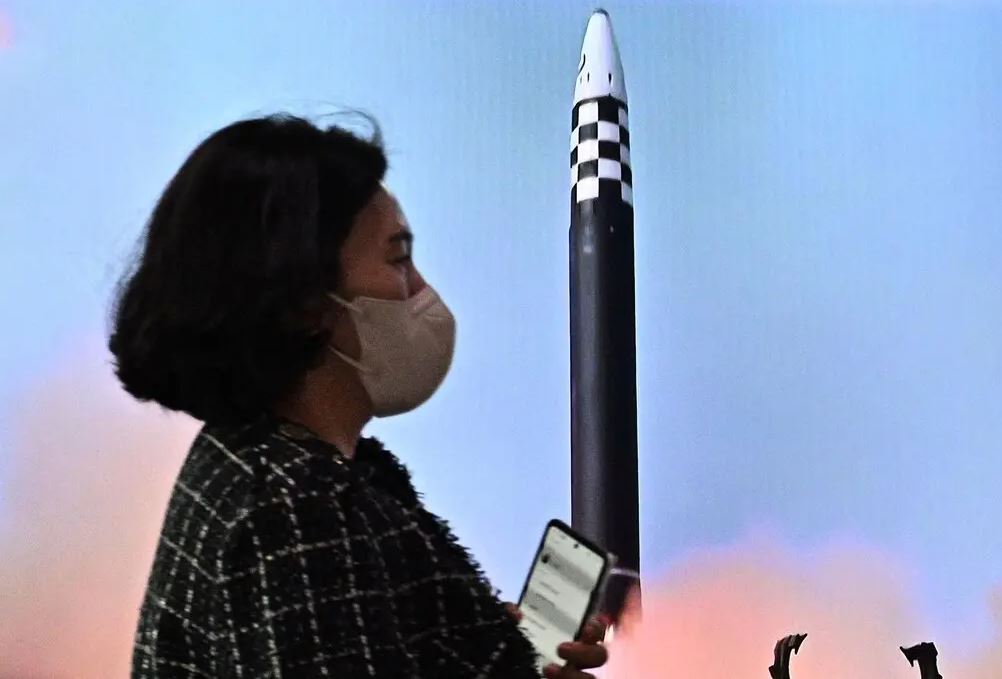North Korea launched what seemed to be two additional short-range ballistic missiles on Thursday morning, the latest hint that it is escalating its weapons programme. This launch came only two days after North Korea fired an intermediate-range ballistic missile that sailed over Japan.
North Korea has now conducted missile tests for a total of 24 times this year, as shown by today’s launches. Alarms were raised throughout the northern parts of Japan as a result of the missile that was launched on Tuesday by North Korea. This was the first time in the last five years that a North Korean missile has flown over Japan.
According to the Japanese Defense Ministry, North Korea fired two short-range ballistic missiles that fell outside of Japan’s economic exclusion zone on Thursday. These missiles were launched from North Korea. According to the South Korean military, the missiles were fired from an area close to Pyongyang, which is the capital of North Korea, in the direction of the seas east of the shore.
Yasukazu Hamada, Japan’s Minister of Defense, said at a press conference that the first missile was fired at six in the morning, travelled around 217 miles, and reached a maximum height of approximately 62 miles. The second missile, which was sent off at 6:15 in the morning, travelled for close to 500 kilometres and reached a maximum height of 31 miles.
According to Mr. Hamada, the second missile looked to follow what may be described as a “irregular trajectory.” In recent years, North Korea has conducted a number of tests with short-range ballistic missiles. Some of these missiles were able to modify their trajectory while they were in flight, making it more difficult to intercept them.
The launches took place a day after a joint exercise between the United States and South Korean forces, during which the two countries launched four surface-to-surface missiles off the east coast of South Korea. Another South Korean ballistic missile failed to reach its target shortly after launch during the drill, although there were no reported injuries, according to authorities from the South Korean military ministry.
Analysts believe that North Korea is ramping up its missile-testing programmer in response to the United States sending its aircraft carrier, the USS Ronald Reagan, to waters between Japan and the Korean Peninsula for the first time in five years as part of joint military exercises last month. This comes both in advance of the midterm elections that will take place in the United States and in response to the fact that the USS Ronald Reagan was sailing in these waters.
According to the South Korean military, after North Korea’s missile launches on Tuesday, the nuclear-powered aircraft carrier was given the order to sail back to the seas near the east coast of the Korean Peninsula. Later, it participated in a joint trilateral exercise with destroyers from the navies of South Korea and Japan. The drill evaluated their combined capabilities to detect, track, and shoot down ballistic missiles launched from North Korea, according to officials from the armed forces.
The Foreign Ministry of North Korea published a statement earlier on Thursday, denouncing the United States for redeploying its aircraft carrier group back to the seas off the coast of the peninsula. It voiced its disapproval of a meeting of the United Nations Security Council that took place on Wednesday to examine recent missile provocations by the nation as well as new sanctions against it. The ministry claimed that the tests were “just counteraction measures” in response to the joint military drills that the United States had conducted with its allies the previous month. Additionally, the ministry accused the country’s enemies of “unwarrantedly” referring the matter to the Security Council.
North Korea has violated a number of resolutions passed by the Security Council in recent months by carrying out a number of tests involving ballistic missiles. Washington has made efforts to convince the Council to adopt more sanctions on the North Korean capital of Pyongyang. Both China and Russia, which have the ability to veto United Nations Security Council resolutions, have voiced their opposition to these actions, urging the United States to resume discussion with Pyongyang and consider relaxing sanctions.
When the United States and its allies have carried out joint military exercises in the area in the past, North Korea has customarily carried out its own military drills, which have included the testing of various types of weaponry. The North claims that these drills are just dress rehearsals for an invasion, while the United States, South Korea, and Japan have all said that the drills assist protect against the rising nuclear danger posed by the North.
Analysts and government officials in Tokyo, Seoul, and Washington are preparing themselves for the possibility that North Korea could perform a nuclear test as a result of the recent bombardment of missile launches.
